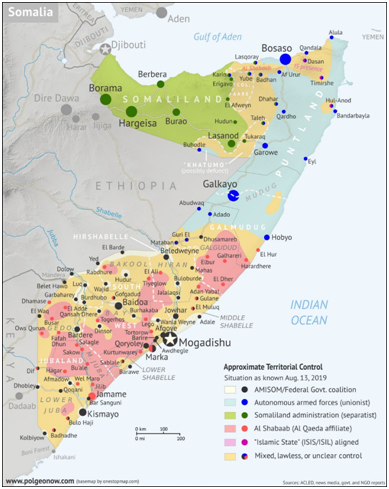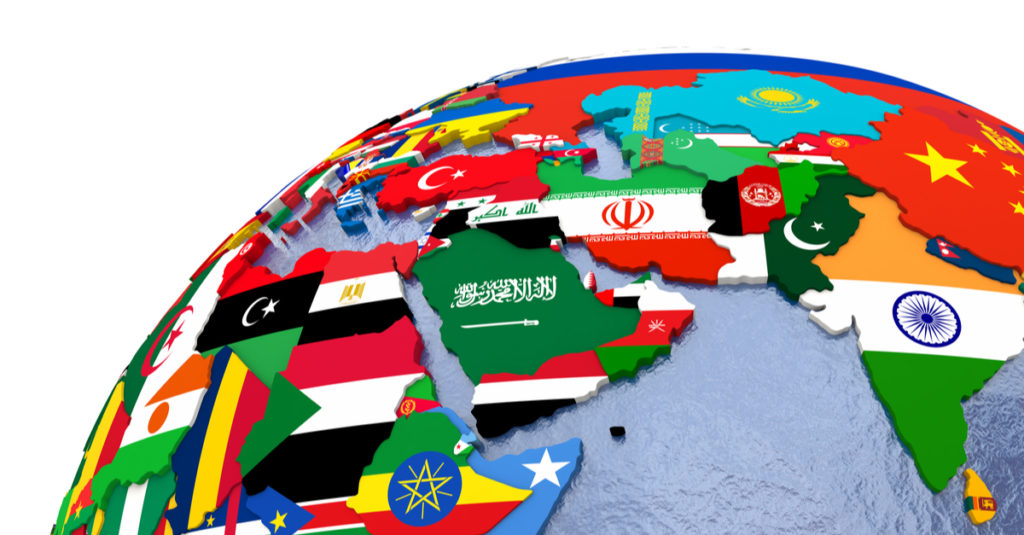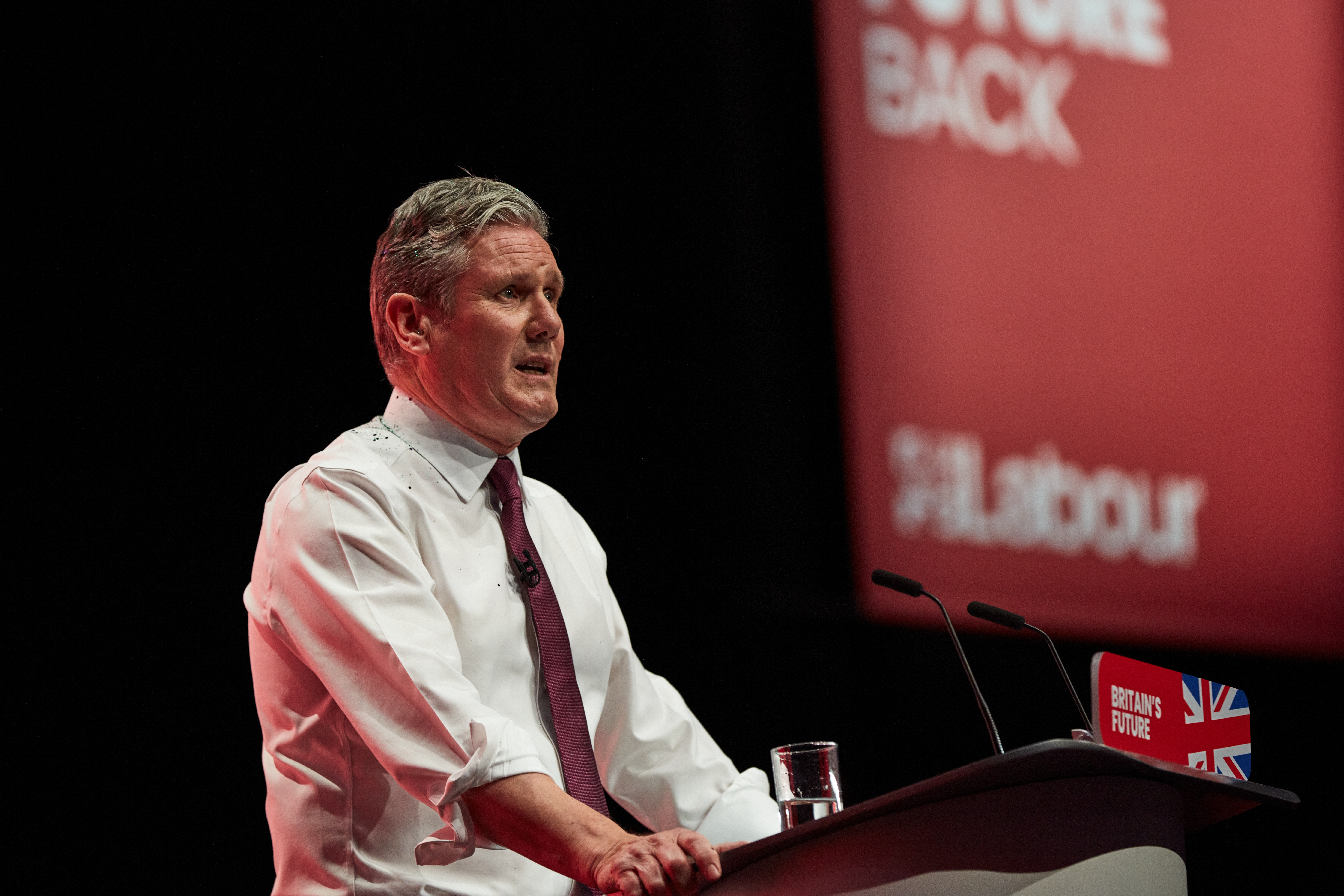Jahangir Mohammed of the Ayaan Institute argues that the War on Terror did not start 20 years ago but has been ongoing for 42 years. He demonstrates how during that period the United States has devastated and broken the Muslim world, as part of a calculated military strategy, causing millions of deaths and casualties along the way.
Twenty years ago the United States was attacked on a day that has become infamously known as 9/11. The slaughter of innocent people at the Twin Towers and Pentagon led George W. Bush and the United States to launch the global “War on Terror” (WOT).
Bush described it as a crusade to “rid the world of evil-doers,” stating: “This crusade, this war on terrorism, is going to take a while.” His language and script in a later speech to the U.S. Congress were reminiscent of the speech of Pope Urban II when he launched the first European Crusade against the Muslim world in 1095. Urban spoke of the rising threat of Islam, the infidels, and the need to go to war to protect the rights of Christians and other minorities. That speech was perhaps the most influential speech of the Middle Ages. The speech of George W. Bush on the 20th of September 2001 is destined to become the most influential speech of this century.
Even though the attacks were carried out by 19 individuals aligned to one non-state militia leader and his small band of followers, the United States decided to launch a global WOT, directly implicating whole states, populations, and the global followers of the Islamic faith, most of whom had not even heard of Osama Bin Laden and Al Qaeda until then.
Whilst Muslim states and scholars were at pains to point out that the murderous act had nothing to do with them or Islam (save a fringe few who glorified it), the Muslim world has been held collectively responsible ever since then.

Twenty years later, most of the Muslim world has been touched by the WOT in one way or another. And the rest of the world has adopted the narrative and methods of the U.S. WOT. For example, states have waged their own wars on Muslims in its name, killing many. Russia, India, China, Syria Israel and Egypt all adopted this new ideology of war in the name of terror.
But the collective targeting and demonisation of the Muslim world have been a deliberate and well-calculated policy and strategy by the U.S. It was not something that could have been crafted in a few weeks following 911.
Subscribe to our newsletter and stay updated on the latest news and updates from around the Muslim world!
“The attack took place on American soil, but it was an attack on the heart and soul of the civilized world. And the world has come together to fight a new and different war, the first, and we hope the only one, of the 21st century. A war against all those who seek to export terror, and a war against those governments that support or shelter them.” President George W. Bush, October 11, 2001
In the aftermath of 9/11, European states, Muslim countries, even Russia and China, rallied around the wounded hyperpower out of fear, or self-interest, overlooking the rule of law, due process, and international conventions. There was now only one principle and rule to be followed. Those with military might have the right to do as they pleased. Any progress towards a rule-based international order that had been made after World War II was now being reversed.
Yet this “might is right” order was not a new principle for the European West. They had been implementing a military might strategy for centuries. Yet it was Islam that was presented as a religion of global violence and a military threat to the world. The WOT was not just a quest for revenge against the perpetrators of 9/11 but was also collective vengeance against the Muslim world.
Aspirations for Islamic self-determination and independence – The Green Peril
This collective demonisation and vengeance masked a policy that had started to be formulated from the 1980s onwards. The goal of that strategy was to neutralise and destroy new emerging centres of potential global political, economic, or military power, that might challenge the United States and its interests as the sole superpower (namely the rise of what was described as “political Islam” and the economic power of China).
Unfortunately, among many on the left and right of Western politics, there is a Eurocentric view of U.S. and European states as benign paternalistic powers involved in nation-building, trying to bring democracy and human/women’s rights to the Muslim world – a colonial civilising mission. Too many in the Muslim world have also been deceived by this propaganda, only to learn through bitter experience that Western political leaders (as opposed to their people) do not really care about democracy or human rights in the rest of the world.
The civilising mission even in colonial times was in fact a mere front for division, destruction, plunder, and self-interest. The colonial rulers co-opted or put in place leaders or governments loyal to themselves and their interests, not those of the indigenous people. U.S. neo-con strategists like John Bolton unashamedly point out that the wars in Afghanistan and Iraq were never about liberating women, nation building or democracy. They were always about American security and national interests.
So, the twin goals of the WOT were to prevent Islamic orientated political resurgence and quests for independence in some regions of the Muslim world. Secondly, the WOT provided a military opportunity for the U.S. to gain a strategic foothold in Middle East, Central/South Asia, and Africa, to protect its global hegemony and contain the economic and military growth of China.
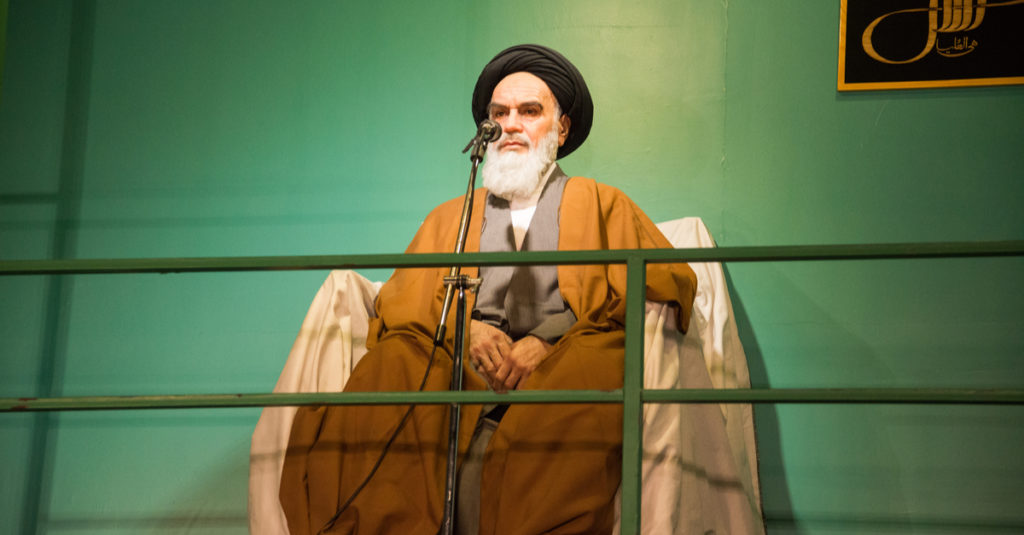
The rise of Islamically orientated movements for self-determination started to emerge primarily from 1979 onwards with several key events. The Soviet Union’s invasion of Afghanistan and subsequent jihad-based resistance response to it. The U.S. had been happy to use the Afghan mujahideen, bolstered by the recruitment of global jihadis, to take on the feared Red Army and defeat it.
Also, in 1979 a revolution overthrew the most powerful U.S.-allied ruler in the Muslim world, the Shah of Iran. The revolution had been led by religious leaders (ulema), something the world had not seen in the contemporary age. But no sooner had this happened the U.S. instigated Saddam Hussain in Iraq to invade Iran. The war would eventually end in stalemate and last eight years, with estimates of a million dead on both sides.
Two years later an economically broken Iraq under Saddam Hussain turned on the Arab regimes that had funded his war with Iran by invading Kuwait in 1990. This brought U.S. troops directly to Saudi Arabia and the first Gulf War in 1991, which led to an estimated 35,000 Iraqi troops and 200,000 Iraqi civilians being killed by the U.S./allied war machine. Although Iraq was expelled from Kuwait the U.S. has never left the region, and its war against Iraq never ended and continues until this day. The Iraqi people have been at war in one form or another since 1980.
In 1982 the desire for Islamic self-determination and independence also emerged in Algeria. The almost certain victory of the Islamic Salvation Front (FIS) in an election was thwarted by the ruling military junta, aided by the French intelligence and military. The same year, also saw Israel invade Lebanon and the emergence of jihad-based resistance to Israel’s invasion and occupation. U.S. troops also entered under the guise of the UN but were forced to withdraw after attacks on their troops. After eight years of resistance, Israel was also forced to withdraw in 2000.
Colonial style divide and rule
To deal with the rise of Muslim states aspiring to become independent and Islamically orientated, the U.S. and Western powers turned to the old colonial strategy of divide and rule. Political and military strategists began to view Muslim nation states, which colonial empires had helped to create at the end of World War l and II, as a liability for the U.S. If Muslim nation states became strong military and nuclear powers, with an independent Islamic orientation, they had the potential to challenge Western interests and assist other Muslim nation states in the same direction. This was especially the case with those states that had larger Muslim populations.
The solution to this problem was seen as simply reducing those states into their various ethnic or religious/sectarian constituencies. If they could be reduced to smaller statelets they would not be able to challenge the West and its interests. They would be much easier to control and use against other states. Such statelets once established, having no modern air defences, could simply be bombed from the skies any time the U.S. wanted, without the need for boots on the ground.
This appeared to be the strategy and it was all done in the name of the WOT; or to spread democracy, human rights, women’s liberation, or simply protecting “our way of life”, and defeating “enemies of freedom.” This was the new language of a Western civilising mission.
Whilst the acts of 9/11 were carried out by a few people, Al Qaeda and terrorism was transformed into a global enemy greater than even the Soviet Union or Nazi Germany for the purpose of imperial domination. Muslims and their religion globally were now seen through the lens of threat, harm, danger, and fear.
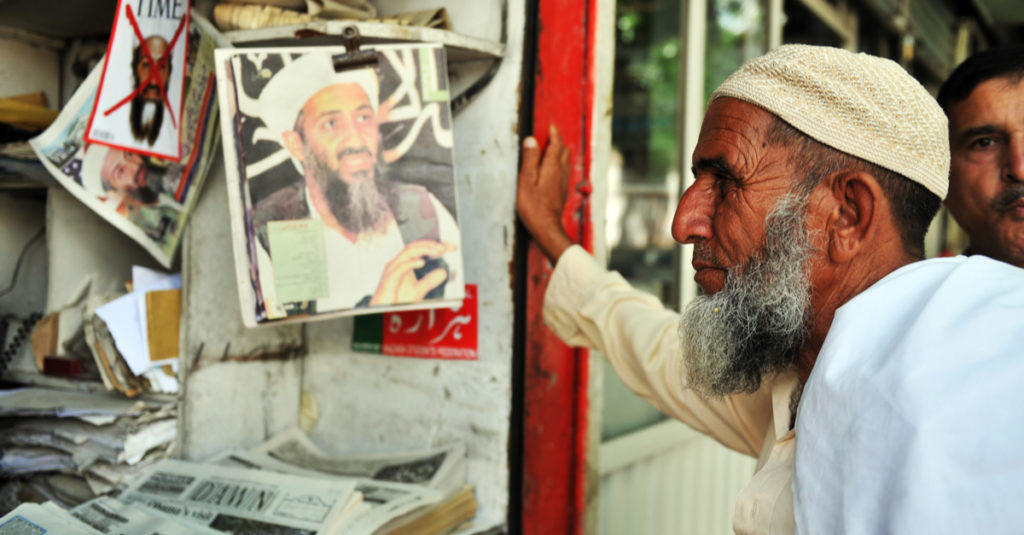
Viewing Muslims through a lens of threat and harm has been institutionalised around the globe in the last 20 years. The use of this language and narrative by politicians and the media, as well as through counter-terrorism policies applied to Muslim communities collectively, simply confirmed the narrative of the far-right. This has led to a growth in far-right political activity and violence aimed at Muslims. In the U.S. this far-right terrorism has grossly exceeded any threat of violence from Muslims but does not produce the same narrative or generation of fear or WOT, which is reserved for Muslims alone.
“On September the 11th, enemies of freedom committed an act of war against our country…”
“Al Qaeda is to terror what the mafia is to crime. But its goal is not making money; its goal is remaking the world – and imposing its radical beliefs on people everywhere. The terrorists practice a fringe form of Islamic extremism that has been rejected by Muslim scholars and the vast majority of Muslim clerics – a fringe movement that perverts the peaceful teachings of Islam. The terrorists’ directive commands them to kill Christians and Jews, to kill all Americans, and make no distinction among military and civilians, including women and children.”
“Our response involves far more than instant retaliation and isolated strikes. Americans should not expect one battle, but a lengthy campaign, unlike any other we have ever seen. It may include dramatic strikes, visible on TV, and covert operations, secret even in success. We will starve terrorists of funding, turn them one against another, drive them from place to place, until there is no refuge or no rest. And we will pursue nations that provide aid or haven to terrorism. Every nation, in every region, now has a decision to make. Either you are with us, or you are with the terrorists. From this day forward, any nation that continues to harbour or support terrorism will be regarded by the United States as a hostile regime.”
George W. Bush 20 Sept. 2001
A Broken Muslim World
The strategy to “turn them one against another” appears to have been discussed among military circles. In 2006, the U.S. military veteran and strategist Ralph Peters, published an article entitled “blood borders”, in the Armed Forces Journal. He argued the borders of Muslim states were artificially created and did not accord with ethnic or sectarian realities on the ground. His solution was straightforward. Muslim states could be dismembered along ethnic or sectarian lines. He produced a before and after map of the Muslim world along with the article. The map appears to be the blueprint for the imperial destruction of the Muslim world. Looking at the “after” map now it seems almost prophetic.
Iraq
Iraq has been involved in three wars, with Iran, Kuwait, and the United States. In 1980 Saddam Hussain and Iraq, encouraged and aided by the U.S. and local Gulf rulers, invaded Iran. After an eight-year war ended in stalemate nearly one million lay dead. Iraq and Syria have been fragmented along the lines foreseen. Iraq is now deeply divided along Shia, Sunni Arab and Kurdish lines. These bitter divisions and hatreds are unlikely to be healed any time soon.
Syria
Syria today is broken with parts under the control of Bashar al Assad and his clan. Other parts are under the control of Iran and Turkey. Whilst as in Iraq, the Kurdish parts of Syria have more autonomy. Syria is unlikely to be a unified state any time soon. The emergence of ISIS across Iraq and Syria facilitated the breaking of borders between the two states as envisaged both maps discussed. In fact, ISIS leader Abu Bakr Baghdadi declared the Sykes-Picot borders created by France and Britain to be broken.
Lebanon
Lebanon was already riven with factionalism before the Israeli invasion of 1982. Interference from Israel and the U.S. reinforced and empowered some factions and reinforced divisions. In 1984 US troops were forced by the local resistance movement to leave Lebanon. Israel eventually was forced to fully withdraw in 2000 from Lebanon. An effective Lebanese resistance movement had emerged and prevented Israel from breaking up the state. Lebanon today is only held together by the military capability of Hezbollah backed by Iran. However, bitter divisions and hatreds remain. It is currently in a dire political and economic crisis, and it remains to be seen if it can hold together as a unified state.
Afghanistan
After 42 years of war and fighting two superpowers, including a 20-year U.S. occupation, Afghanistan today is no longer a functioning state. Although the Taliban have now returned to power, they are a militia movement that has a long journey to transition to becoming a political authority and functioning state. Lacking any resources and modern military capability, they remain vulnerable to instability and interference by the U.S. through drone strikes and control through donor/aid dependency. However, the Taliban have forced the U.S. to withdraw and end their military occupation. In doing so, they have prevented a long held U.S. military goal (before even 1979), the establishment of a military base in the region from which to destabilise China and Pakistan.
Pakistan
The map also contains a plan for breaking up Pakistan, considered to be a U.S. ally. The break-up of Pakistan on the map entails the establishment of an independent Baluchistan. Interestingly, this “free” Baluchistan would incorporate Gwadar port which is central to the China/Pakistan Belt and Road Initiative, a key Chinese economic project. Whilst this plan has yet to materialise, there is no doubt several states, including India and the U.S., have been facilitating a Baluchistan independence movement. Now that the U.S. has left Afghanistan, this plan will very much be a work in progress for enemies of Pakistan. A constantly destabilised Afghanistan and Pushtun ethno-nationalism inside Pakistan, would facilitate that project and disrupt China and Pakistan’s joint economic projects.
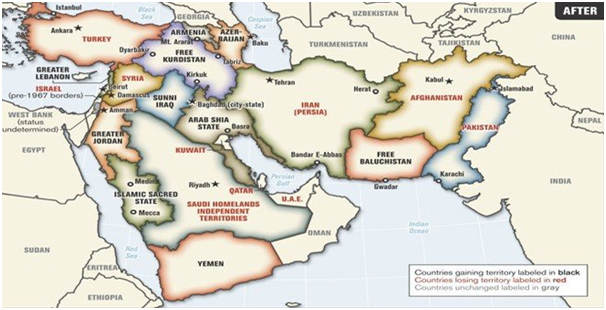
Peters was not the only strategist thinking along these lines. In an article in the New York Times in 2013, Robin Wright imagines a remapped Middle East. A scholar at the United States Institute of Peace and the Wilson Centre, she produced her own map in which five countries are reduced to 14. The map incorporates the breakup of Libya, Yemen, and Saudi Arabia.
Yemen
Yemen has already fragmented into north and south after a long and bitter proxy war involving Saudi Arabia and Iran along with allied militias. The outcome is that Yemen is unlikely to continue to exist as a single state. This is exactly as the map below shows, a Yemen divided into two separate states, north and south.
Saudi Arabia
Although Saudi Arabia is a key ally of the West, in Wright’s map it is speculated that the Saudi state could split into five components as it was prior to the formation of the modern Saudi state. This seems very unlikely at present, although it very much depends on what happens next door in Yemen.
Libya
Libya since the fall of the Gaddafi regime aided by the U.S. and European states, has already splintered into factions controlling different regions. Other external African states, Egypt, the UAE, Russia, and Turkey are all also involved. In U.S .congressional hearings on Libya, the confederation of Libya along the lines suggested in Wright’s map are openly being discussed as a possible solution to the ongoing civil war.
“Third. Libya’s fractured politics. Although there has been some progress in forming a national unity government in Libya, “unity” is today a rather inapplicable word for the country. Friction between various political actors remains high. One approach to consider is helping Libyans build a confederal state divided into three large regions. Tripolitania, Cyrenaica, and Fezzan.”
SOURCE: COMMITTEE ON FOREIGN AFFAIRS HOUSE OF REPRESENTATIVES ONE HUNDRED FOURTEENTH CONGRESS SECOND SESSION SEPTEMBER 27, 2016
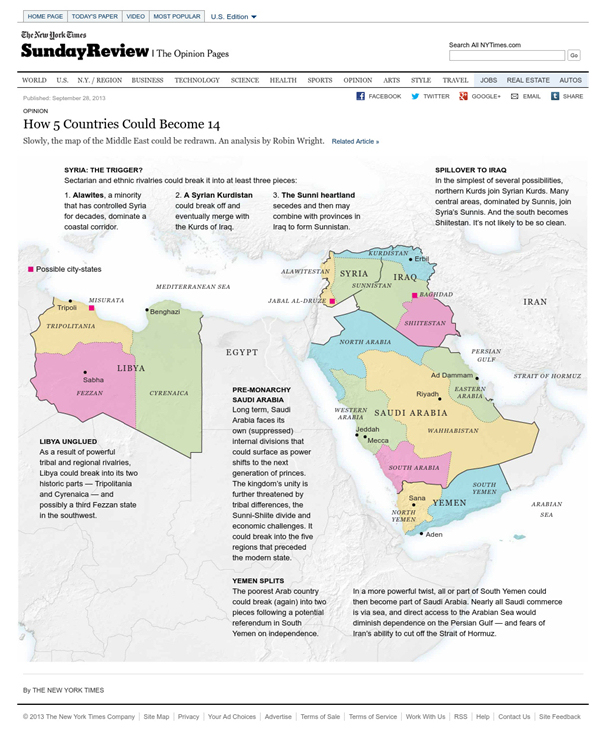
The strategy of breaking Muslim nation states into smaller states by the U.S. and European powers is not limited to the Middle East and South Asia. It has been operational in Africa for some time. Libya is one example. Since 9/11 interventions deeper into Africa have been camouflaged under the WOT mission.
Sudan
Sudan has already been broken into north and south and a separate Darfur state is a real possibility. The long civil war in Sudan between north and south (1983-2005) ended with the mainly Animist and Christian south gaining independence, thanks to Western support.
The competition for oil contracts with China in the south led to direct CIA involvement and Christian evangelical support for a separate South Sudan. The USA’s problem with Osama Bin Laden was not just his opposition to U.S. troops in Saudi Arabia, or his support for attacks on U.S. facilities in Africa. Bin Laden whilst doing construction work when he moved to Sudan (1991-1996), was actively funding and supporting a jihad movement in Sudan’s war against secessionists in the south, and successfully.
That was in direct opposition to CIA policy which wanted to keep out the Chinese from oil deals and economic control in the south. The Sudanese government came under pressure from the USA to eventually hand Bin Laden to the U.S., at which point he returned to Afghanistan. The removal of Bin Laden from Sudan was seen as an important step towards a separate South Sudan.
Somalia
The UN and USA have been involved militarily in Somalia since the 1990’s ostensibly to help with famine and humanitarian aid during a bitter civil war. In 1992 there were an estimated 28,000 U.S. troops in Somalia as part of a UN aid mission, who were eventually forced to withdraw. In 2006 the Islamic Courts movement came to power even though the U.S. had supported local warlords against them. The movement brought some semblance of order to Somalia after 15 years of civil war. However, Somalia is an important geo-strategic area with access to the Indian Ocean and Gulf of Aden trading routes. The U.S. was bound to intervene and instigated Ethiopia to invade Somalia and remove the Islamic Courts movement from power. Today Somalia is very much a fragmented state with rival groups and factions controlling different areas.
Nigeria
Nigeria has the largest population of Muslims in Africa of around 100 million out of its 200 million people. It is also blessed with oil wealth and a major import trading partner for the U.S. The U.S. has been a key strategic partner. Whilst there has been no direct military intervention by the U.S., different ruling and military elites have been supported by a few external powers, including the U.S. The Nigerian military also operate their own war on terror in the country against several local groups linked to ISIS. Today Nigeria is divided bitterly divided along tribal and ethnic lines and all the talk these days is whether it can survive as a single state.
42 years of suffering and destruction in the Muslim world
The WOT did not start 20 years ago, it started 42 years ago. During that time the United States has caused untold death and misery in the Muslim world. Whilst it is true that ethnic tribal and sectarian rivalries already existed in Muslim states, U.S. strategy has exacerbated those fault lines and contributed directly or indirectly to the break-up of Muslim nation states, setting them back economically, politically, and militarily.
If one were to count the number of dead in each of the military interventions that the U.S. has aided or been involved in the Muslim world, it would be in the millions. The Iraq-Iran war is estimated at a million alone. In the last 20 years those interventions have resulted in 37 million refugees, mainly Muslims. If this is what U.S. liberation looks like, no one in the Muslim world wants it. It is time the U.S. and European states stopped meddling in the Muslim world. Muslim states must find their own solutions to their own problems.
Whilst the U.S. has managed to break the Muslim world, it has also failed in some of its objectives. It has not stopped the desire of states/movements for self-determination and independence. The U.S. has failed to establish permanent military bases in Afghanistan and Pakistan and will have to eventually leave Iraq too.
Today the United States is back to square one. The religious leaders are still in power in Iran despite 40 years of sanctions. Twenty years after they were removed from power, the Taliban are back. This is another group of religious leaders from a different tradition within Islam are now going to be ruling another country. These religious leaders in both countries do not believe in Western democracy; they believe in their own politics according to their own religious traditions. Whilst others in the Muslim world may not agree with their versions of Islam, they both seem to have been effective in resisting U.S. and Western intervention. No wonder the Western media and politicians have resorted to wholesale demonisation and fearmongering.
Meanwhile, China has become even more powerful and is certain to rival and surpass the economic power of the U.S. The U.S. will not give up its interference in the Muslim world, and still have military bases in some Muslim countries. They still need a presence in central/south Asia to counter China and its trade. So we can expect more interference.
For the U.S. and West it’s time to end their imperialism and civilising mission in the Muslim world. Muslim states are already looking to China for what they really want and need – political independence and economic development.
The greatest challenge for most Muslim states in the coming decades is going to be the ability to feed their rapidly growing populations through trade and economic development. That cannot happen unless there is a political settlement in the region. It must be able to bring peace and security to all people, regardless of ethnicity, tribe or religious school of thought.
The wealth of individual states, and statelets is going to have to be shared among all its people. It is unlikely that the fractures that have taken place can be healed in form of nation states with defined borders, and majority-minority relationships. The challenge for the Muslim world will be finding a way of reconfiguring broken Muslim states into a unified functioning political bloc, that can curb rising division and hate fuelled by competition for and hoarding of wealth, tribalism, ethno-nationalism and sectarian vigilantism.
What Muslim minority communities in the West and elsewhere can contribute to that process is also something that needs more work and discussion.
This article first appeared on the Ayaan Institute’s website.



